Who doesn’t love seeing conversions roll in after launching a stellar ad campaign? But do you know where those conversions are coming from?
This is where Google Tag Manager (GTM) enters the picture, allowing you to track conversions effectively.
Let’s delve into this brilliant tool and learn how to set it up for optimum results.
Understanding Google Tag Manager
Before you dive headfirst into the world of tags and triggers, you need to understand what GTM is. Google Tag Manager is a free tool that enables you to manage and deploy marketing tags (snippets of code or tracking pixels) on your website (or mobile app) without modifying the code.
Simply put, it’s a convenient tool that helps you manage all the different types of code you need for your website in one place.
The Basics: How to Set Up Google Tag Manager
First and foremost, create a Google Tag Manager account and set up a container for your website.
The container is a snippet of code that you’ll need to paste into every website page.
Once you’ve created your container, you’ll be in the Google Tag Manager Workspace. Here, you’ll find the core components of GTM: Tags, Triggers, and Variables.
- A Tag is a snippet of code that sends information to a system such as Google Analytics.
- Triggers are the conditions that, when met, make the tags fire.
- Variables are additional information that GTM might need for the Tag and Trigger to work.
Tracking Conversions With Google Tag Manager
The real magic of Google Tag Manager is revealed when it starts tracking conversions on your website.
Here’s how to set it up:
1. Create a New Tag in Google Tag Manager:
a. Go to your Google Tag Manager (GTM) workspace and select ‘New Tag’.
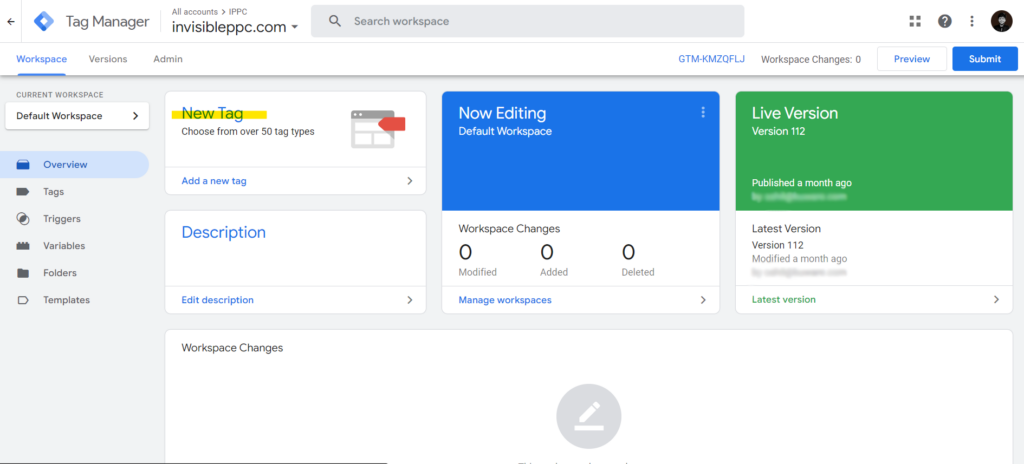
A tag is a snippet of code that sends information to a third party, like Google Ads, in our case.
2. Select Tag Configuration:
a. Click on ‘Tag Configuration
‘, which will bring up various types of tags you can use.
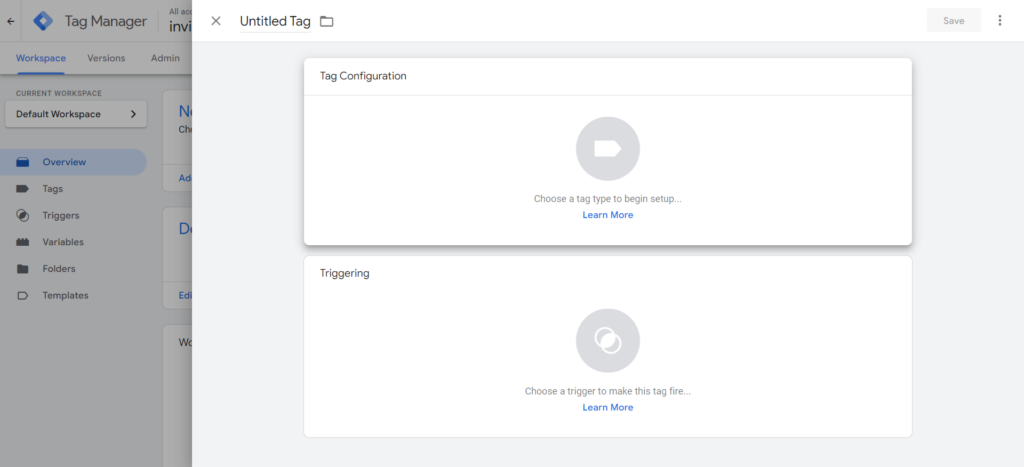
b. For our purpose, choose ‘Google Ads Conversion Tracking’. Here’s where you’ll use your Conversion ID and Conversion Label, both of which you can find in your Google Ads account.
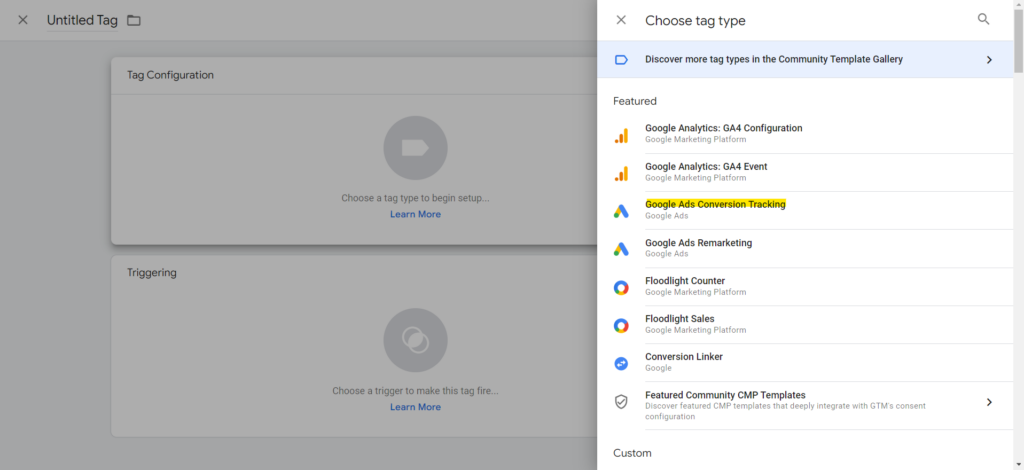
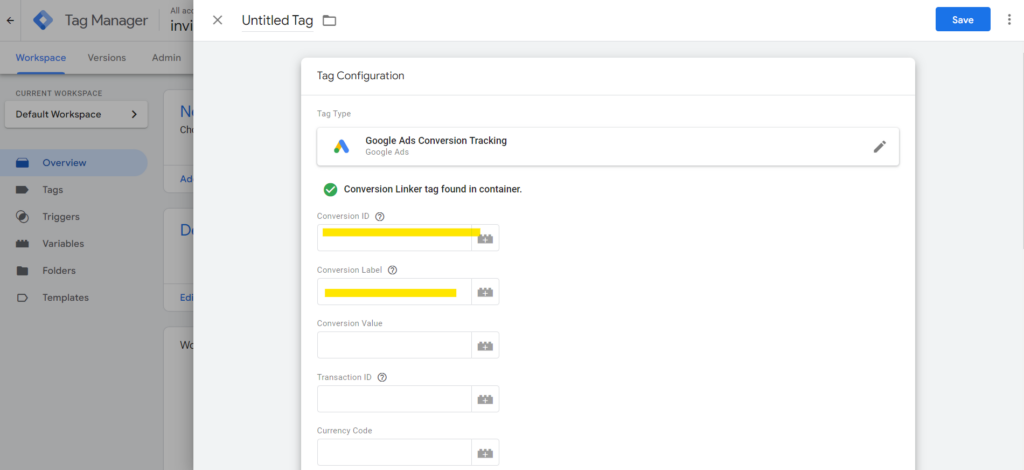
3. Set a Trigger:
a. Click on ‘Triggering’, followed by ‘+’. A trigger in GTM is a condition that, when met, causes the tag to fire.

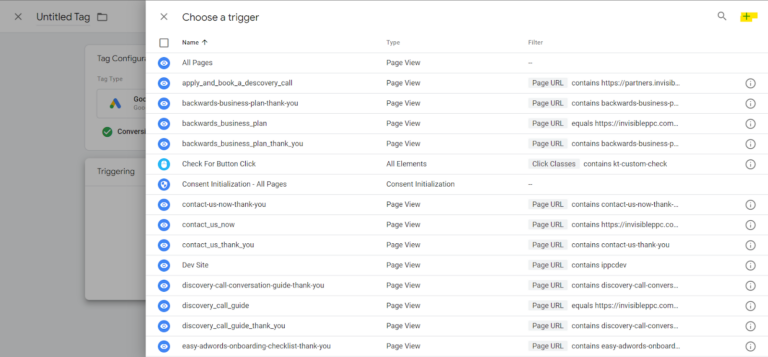
The trigger could be a page view, a form submission, or a click, depending on what you count as a conversion. So, you’ll select the trigger type based on what you want to track.
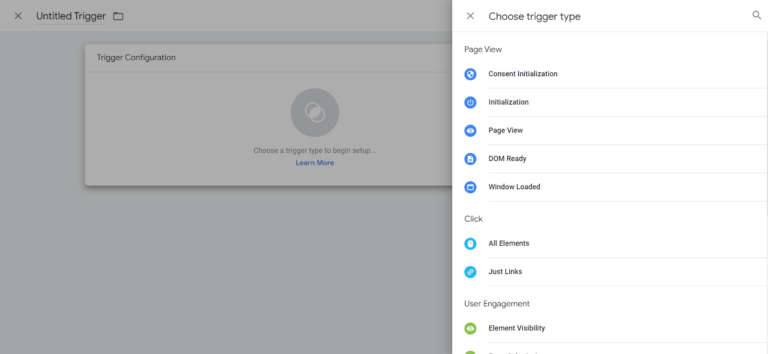
4. Define the Trigger:
a. After selecting a trigger, you’ll need to specify it further. For instance, if you’re tracking form submissions, you may need to specify the exact form. If tracking page views, it might require you to define the precise URL like below.
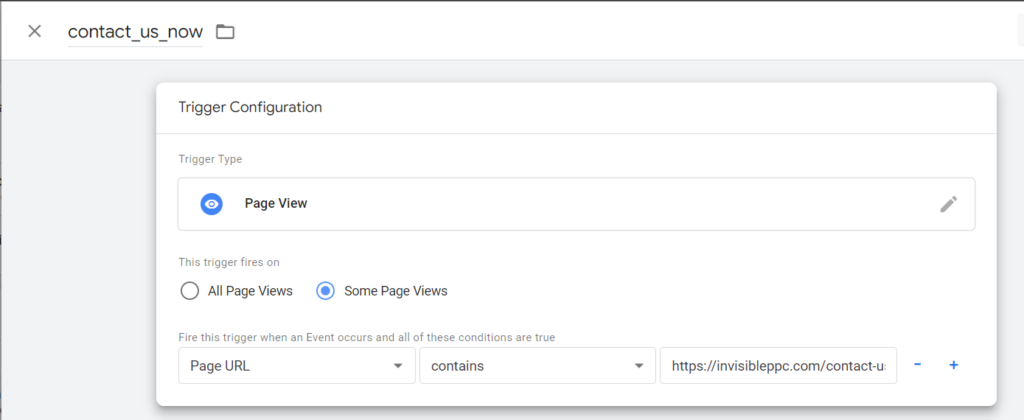
Defining your trigger narrows down the conditions under which your tag fires.=7
5. Save Your Settings:
Once you’ve configured your tag and set your trigger, click ‘Save’ to store your settings.
6.Test Your Setup:
It’s vital to test that your tags are working correctly. GTM’s ‘Preview mode’ allows you to see if your tags are firing under the conditions you set. If everything is working as it should, you’re good to go!
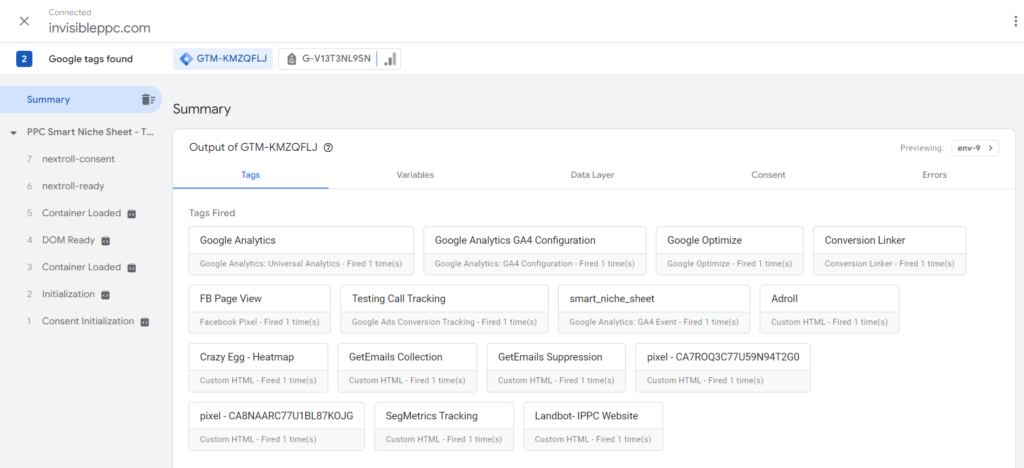
And voila! You’re all set to track conversions using Google Tag Manager. Whether it’s form submissions, document downloads, or button clicks, you’ll now have a better grasp of your audience’s actions.
Ending Note
And there you have it, folks! Tracking conversions with Google Tag Manager is like having a super-detailed diary of your customers’ actions.
It’s your go-to guide for understanding what’s working and what’s not on your website. So don’t be shy—dive in and start tracking!
Remember, data is your friend, and the more you know about your customers, the better your strategies will be. In the ever-evolving world of digital marketing, staying on top of your conversion data is crucial for success.
So, gear up, set your conversion goals, and let Google Tag Manager do the heavy lifting.
Happy conversion tracking!
